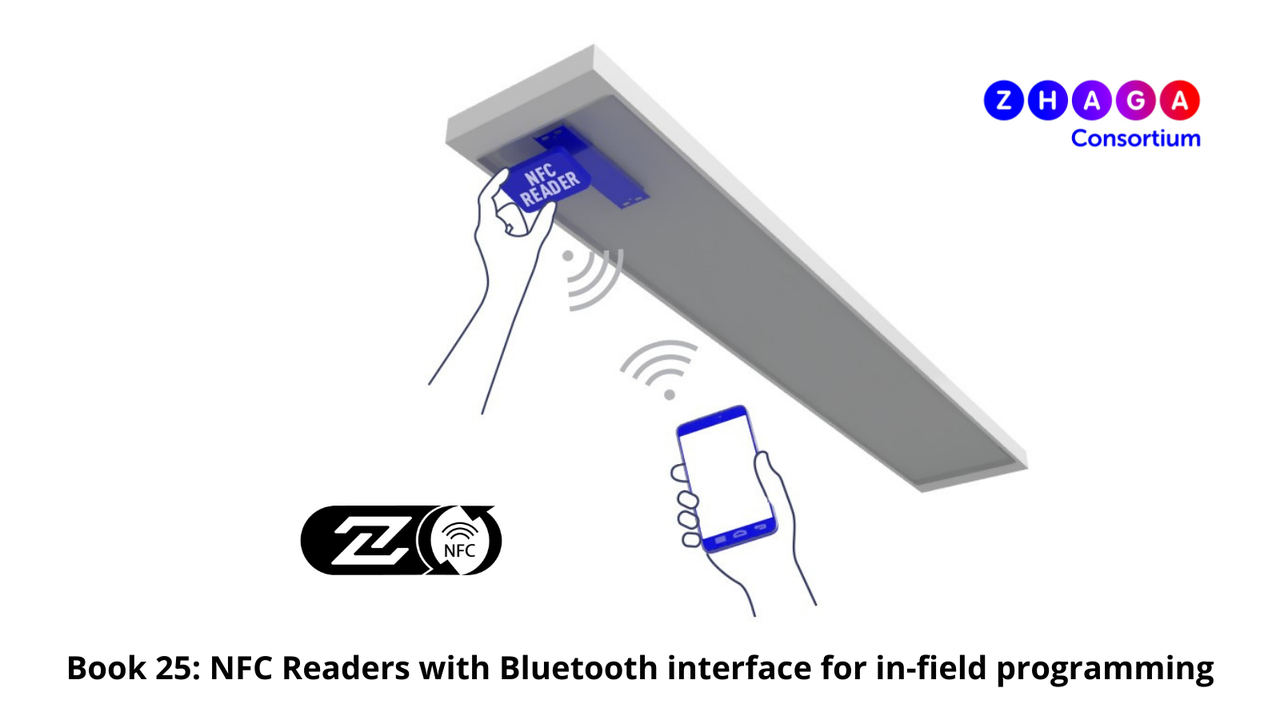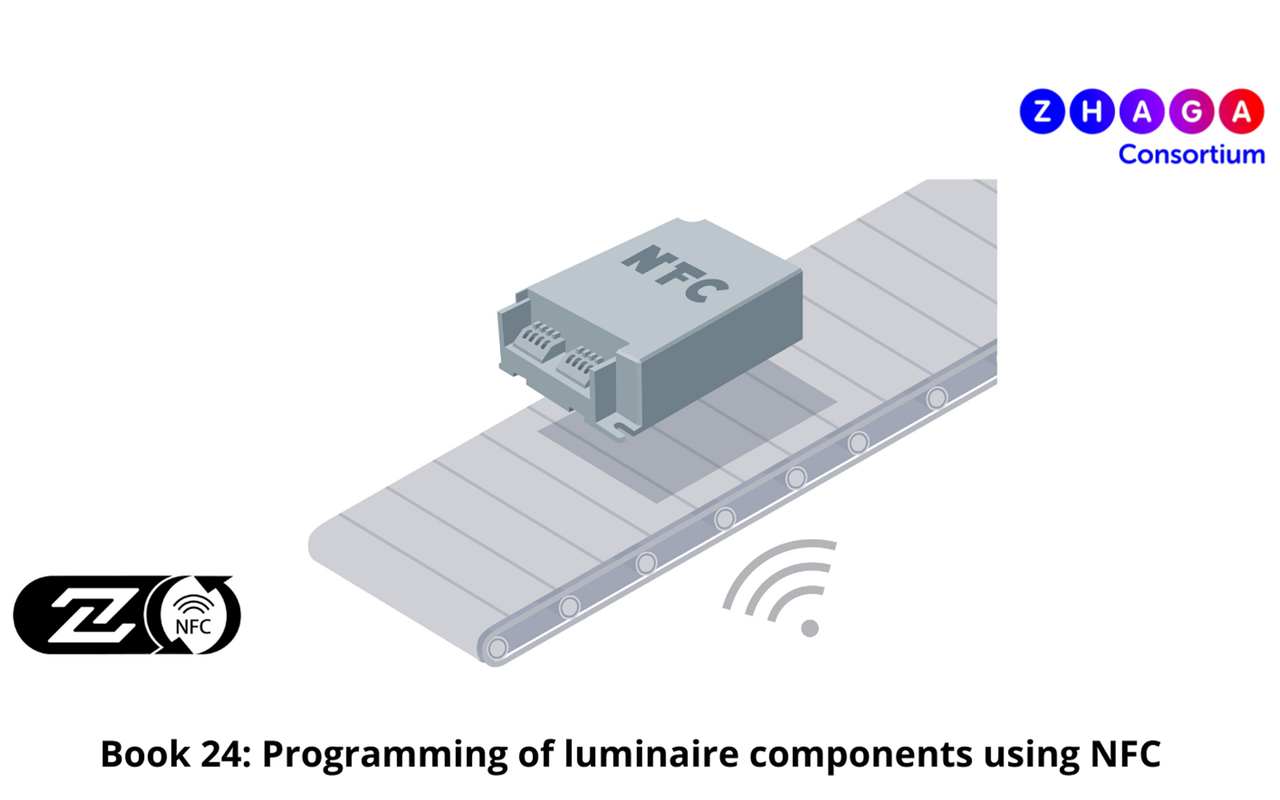New Zhaga Specifications Solve the Smart Luminaire Data Management Problem
If you’ve ever paid for something by hovering your debit card or phone above a card reader, then you’ve used Near Field Communication (NFC) technology. While mobile payments may be the best-known use of this technology, it is by no means the only. In fact, this extremely short-range wireless communication standard can be found in everything from tablets to speakers, wearables, and gaming consoles. NFC is also regularly used for quickly pairing devices, managing access to public transportation, and to support a number of home automation devices.
It's even attracting the attention of the lighting industry.
“While the lighting industry has long leveraged the benefits of wireless connectivity, NFC could further reduce its reliance on coded mains and wiring,” says Dee Denteneer, Secretary General of the Zhaga Consortium. Zhaga is the global lighting-industry consortium with the mission of standardising the interfaces of components of LED luminaires.
As Arnulf Rupp, Chair of Zhaga’s Module Driver Interface Working Group explains, NFC allows manufacturers to configure such lighting components as LED drivers to their specifications both before and after installation. “This ability to change settings in-the-field means you can configure fixtures faster, reduce inventory, and perform on-the-spot troubleshooting,” he says.
NFC can also play an important role in making lighting more sustainable. “NFC lets you manage data over the luminaire’s entire lifecycle, from production to installation, maintenance, replacement and repair,” adds Rupp. “Having such lifecycle data not only helps increase efficiency, it also promotes products that use a modular design and that can be easily repaired and upgraded – what Zhaga calls ‘Circularity Lighting’.”
One tool for all field-maintenance applications
Of course, reaping these benefits depends not only on all smart luminaires and relevant components being NFC enabled, but that they be compatible with interoperable maintenance tools (i.e., NFC readers).
This is where Zhaga comes into play.
“An increasing number of lighting applications require reading out parameters and changing the settings of LED drivers in the field,” says Rupp. “But because LED luminaire manufacturers currently use a variety of methods for configuring LED drivers and reading parameters throughout the product lifecycle, doing so can be complex, cumbersome, and inefficient.”
For example, in addition to NFC, other common methods used by LED luminaire manufacturers include setting output current with plug-in resistors and programming LED drivers through the DALI interface. “The result is that maintenance staff must manage all these different methods, each of which requires the use of different tools,” adds Rupp.
Zhaga solves this problem through specifications, which it calls Books. “Luminaire manufacturers, installers, system integrators, and utility companies now have the option to select only one programming tool that will work with all field-maintenance applications from all vendors implementing Book 25 and all NFC-programable devices implementing Book 24,” says Rupp.
Whereas Book 24 is geared towards luminaire manufactures, Book 25 defines a Bluetooth Low Energy communication protocol for the communication between the field-maintenance application on a smart device and the NFC reader. In doing so, it enables maintenance and replaceability with a cross vendor harmonised method of NFC programming for in-field use.
Specifically, Book 25 defines a Bluetooth Low Energy GATT-Service that NFC Reader manufacturers can implement for the communication between the field-maintenance application on a smart device (cell phone, tablet, etc.) and the NFC reader. This allows the field-maintenance application to read and write parameters on NFC-enabled LED drivers without the need for a cable-based connection. Field maintenance with Book 25 may also be used for other components that require programming, such as sensors or connectivity nodes.

Building trust through certification
Zhaga has also developed the Zhaga-NFC certification programme for Books 24 and 25, which is available for Regular and Associate Zhaga members and is provided by Zhaga accredited test centres. Recently, NFC readers produced by FEIG ELECTRONIC and TERTIUM Technology became the first NFC readers to be Zhaga certified.
“To have a device fully compliant with ZHAGA Book 25 certification is a guarantee of perfect integration and functionality of our readers with our customer LED Drivers. Furthermore, it qualifies our readers and our presence in the LED lighting market," states Axel Penzo, TERTIUM Technology.
“The certification process according to ZHAGA Book 25, performed by an independent test house, gives users the confidence of getting a compatible and proven product. In complement to the proven "Qualified Reader" according to ZHAGA Book 24, the two new mobile readers according to Book 25 are a further step to a complete product family from FEIG ELECTRONIC for the LED lighting market”, says Wolfgang Meißner, FEIG ELECTRONIC.
To build trust in the interoperability of components, only certified NFC readers and NFC-programmable devices can carry the Zhaga-NFC logo. However, beyond building trust, the use of Zhaga-certified products also provides an array of business advantages, including:
- Certified NFC readers available from multiple suppliers
- Consistent NFC reader supply for luminaires with NFC programmable components
- Certified NFC programmable components available from multiple suppliers
- Easy to identify (trademark) if NFC reader works with vendor software written for Zhaga NFC capable components
- Certification logos provide an established brand for product marketing
“Together, these two specifications solve the data management problems of smart luminaires by enabling interoperable maintenance tools that ensure configurable luminaires are easy to service over their entire lifecycle,” concludes Dee Denteneer.
To learn more about Zhaga-NFC certification, please visit https://www.zhagastandard.org/certification/zhaga-nfc-certification.html or contact us at info@zhagastandard.org.
© 2022 Luger Research e.U. – Institute for Innovation & Technology

